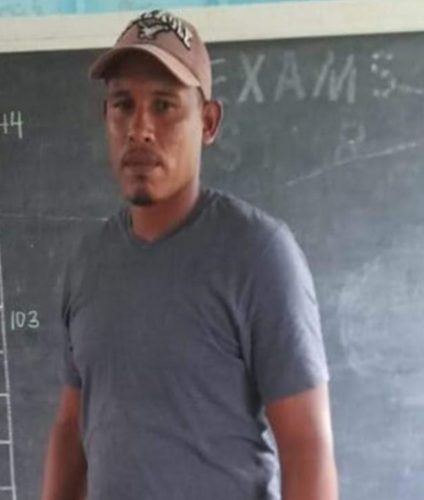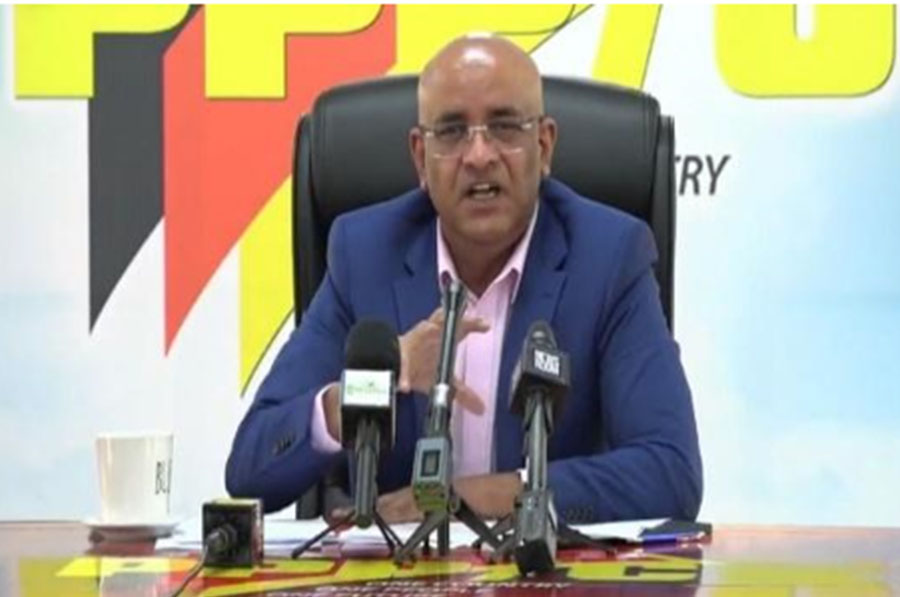People’s Progressive Party General Secretary Bharrat Jagdeo said on Thursday that the Muritaro Primary School in Region Ten, will be raised above ground level to counteract flooding at the academic facility.
He was responding to a question posed by Stabroek News at a press briefing held at Freedom House, in relation to the development status of the school, given that the new academic year commenced on September 4.
“At the Toshao conference, several of the residents raised this issue with us including the Toshao, and we said that we will be moving the school up to higher ground because it has been flooded when the tides in the river are high so we are working to address that,” he said.

“This was done at a particular time when we didn’t have this intensity of climate change in relation to rainfall, but things are different now. Several other communities like Muritaro, which are below sea level, have experienced flooding especially during the rainy seasons and we cannot allow this to disrupt the activities of school children,” Jagdeo added.
Based on engagements with residents of Muritaro, he said, remedial works will begin as soon as possible to facilitate the comfort of teachers and students.
This newspaper back in 2010 reported that heavy rain had flooded large swathes of inland areas, cutting off some communities and at least 200 families in villages along the upper Demerara River. Muritaro was among the affected communities.
The Civil Defence Commission had been mobilised along with the ministries of Agriculture, Amerindian Affairs, and Health, and the Region Ten Administration, as there was a dire need for food supplies and potable water in affected areas.
Then minister of Transport and Hydraulics Robeson Benn, and minister of Local Government and Regional Development Kellawan Lall had visited the communities to assess the extent and impact of the flooding. They had also assessed the damage done to Muritaro Primary in the wake of the flooding.
According to Jagdeo, his government is working to prevent a recurrence by relocating the school above ground level.
Although the press briefing focussed on party-related matters, Jagdeo reminded of his government’s commitment to the development of all hinterland communities. “I want to say that those hinterland communities that did not witness any development this year will be targeted next year. They have my word because all these communities cannot be developed this year though they would have been on our budget and I mentioned that to the President. However there will be development,” he stated.
Fifteen percent of revenue received from the sale of carbon credits is expected to go towards the investment in the village sustainability plans produced by villages and communities with more than 233 hinterland communities slated to benefit. Development programmes and initiatives specifically tailored to improve the livelihood of Guyana’s First Peoples have been allocated $4.7 billion, while $2.7 billion have been budgeted for the Amerindian Development Fund, which includes continued training in tourism and hospitality, business development plans, garment construction, ATV, and small engine repairs etc. Additionally, $5 billion have been allocated for the development of hinterland roads.
Last month, the government tabled a financial paper in Parliament for supplementary funding to the tune of $61 billion for the period ending December 31, 2023, and a major item was community roads especially those in hinterland and coastal regions.
Meanwhile, Toshao of Muritaro Nick Estwick recently told this newspaper that there is no access to secondary education in the village and students have to travel to other communities which has resulted in a brain drain in the village. He urged the government to put this on the developmental agenda.
He also touched on the issue of insufficient transportation for residents in the community, especially the school-aged population.
Estwick noted that while the community had experienced some level of development in relation to roads, bridges and other facilities, the biggest challenges remain the lack of a secondary school and constant flooding of the primary school due torrential rainfall and low depth of the facility. (Antonio Dey)










